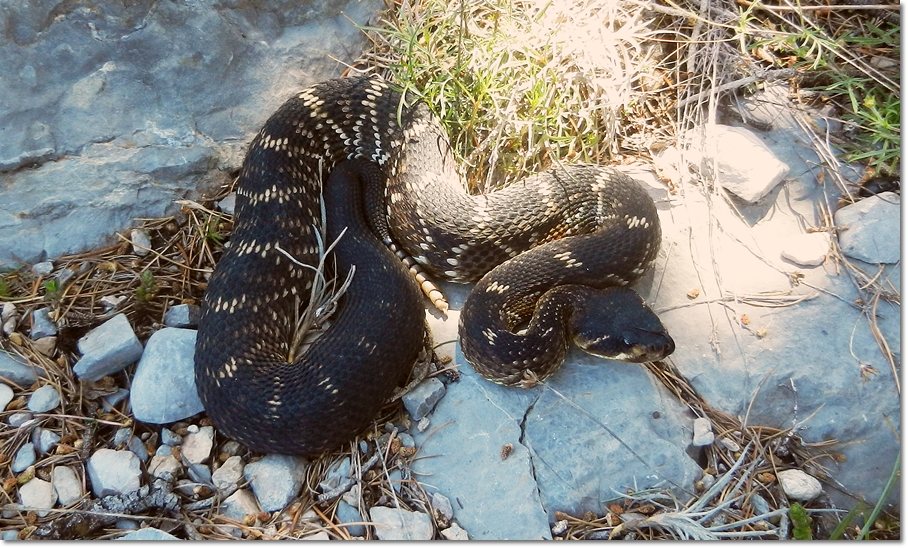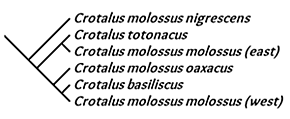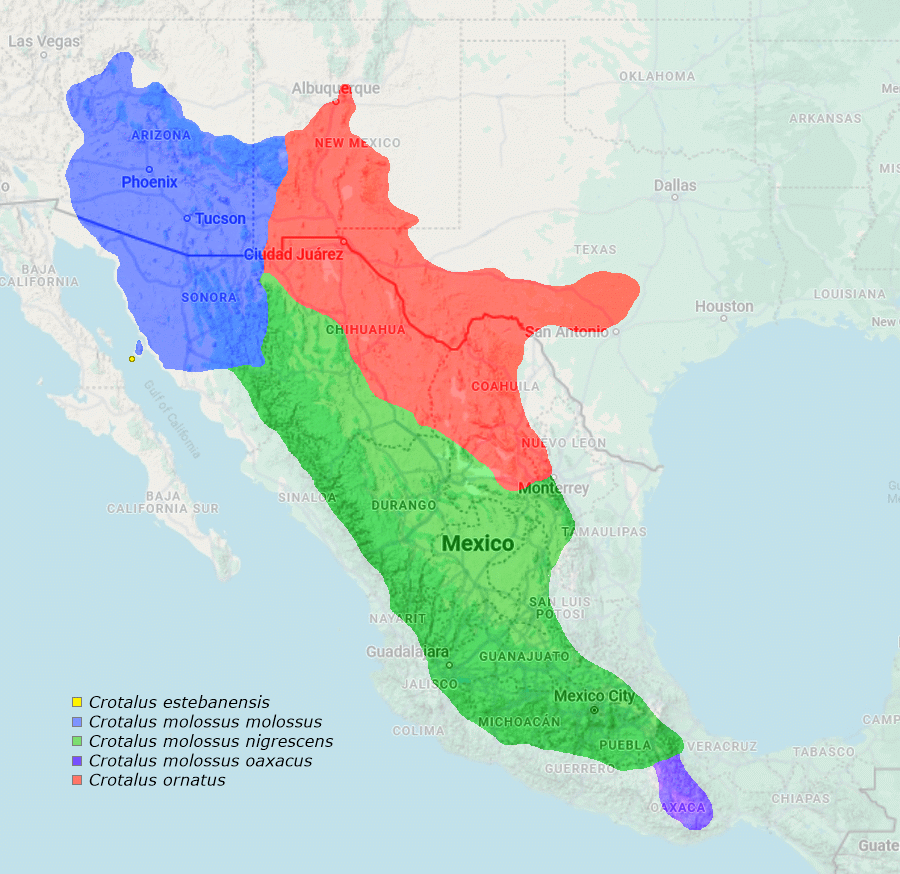
 |
 |
 |
 |
 |
 |
 |
 |
 |
 |
 |
Crotalus molossus molossus (northern blacktail rattlesnake)
Crotalus molossus has been shown to be polyphyletic1. Mexican populations of Crotalus m. molossus show an east-west divide with western individuals falling into a clade with the Mexican west coast rattlesnake (Crotalus basiliscus) and eastern individuals falling into a clade with the Totonacan rattlesnake (Crotalus totonacus). The Mexican blacktail rattlesnake (Crotalus m. nigrescens) has the largest distribution of all the blacktail rattlesnakes and is the most basal taxon of the group. The Oaxacan blacktail rattlesnake (Crotalus m. oaxacus) which is found at the southernmost portion of the distribution of Crotalus molossus falls into a clade with western Mexican Crotalus m. molossus and Crotalus basiliscus. The San Esteban Island blacktail rattlesnake (Crotalus estebanensis) - endemic to the island of San Esteban in the Gulf of California - has been elevated to full species status. Current research shows Crotalus molossus molossus containing five clades in the United States leading to the resurrection of the name Crotalus ornatus for populations in Texas and eastern New Mexico2.
Crotalus estebanensis (Klauber 1949)
Crotalus molossus molossus (Baird & Girard 1853)
Crotalus molossus nigrescens (Gloyd 1936)
Crotalus molossus oaxacus (Gloyd 1948)
Crotalus ornatus (Hallowell 1854)
This website contains information mostly dealing with Crotalus molossus and Crotalus ornatus in the United States as that is unfortunately what I am most familiar with right now. I would love the opportunity to spend more time learning about the blacktail rattlesnakes in the field in Mexico.
1 Wüster, W., J.E. Ferguson, J.A. Quijada-Mascareñas, C.E. Pook, M. da Graça Salomão, and R.S. Thorpe. 2005. Tracing an invasion: landbridges, refugia, and the phylogeography of the Neotropical rattlesnake (Serpentes: Viperidae: Crotalus durissus). Molecular Ecology 14:1095-1108.
2 Anderson, Christopher G. and Eli Greenbaum. 2012. Phylogeography of Northern Populations of the blacktail Rattlesnake (Crotalus molossus Baird And Girard, 1853), With the Revalidation of C. ornatus Hallowell, 1854. Herpetological Monographs 26 (1): 19-57. |



